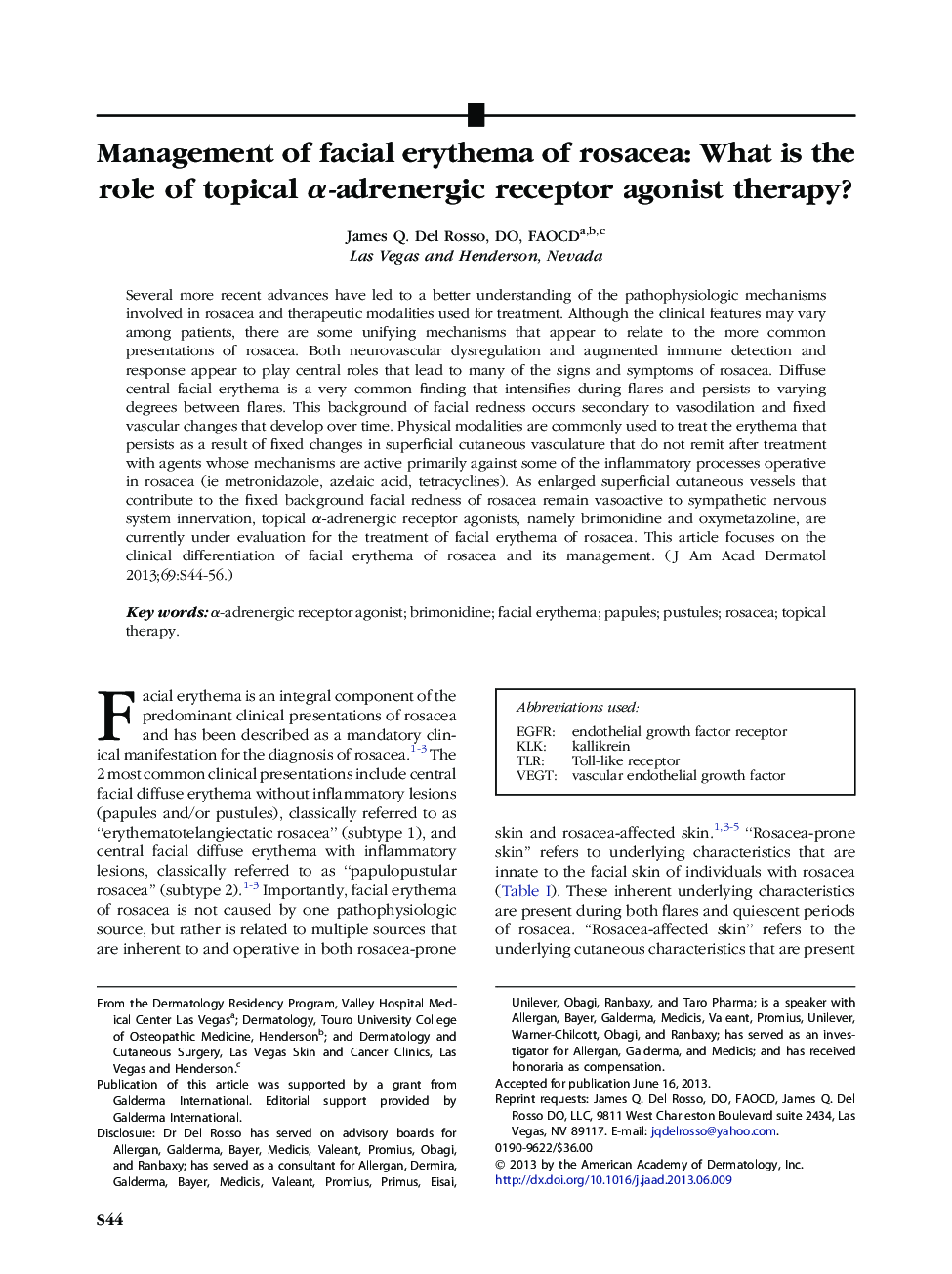| Article ID | Journal | Published Year | Pages | File Type |
|---|---|---|---|---|
| 3205297 | Journal of the American Academy of Dermatology | 2013 | 13 Pages |
Several more recent advances have led to a better understanding of the pathophysiologic mechanisms involved in rosacea and therapeutic modalities used for treatment. Although the clinical features may vary among patients, there are some unifying mechanisms that appear to relate to the more common presentations of rosacea. Both neurovascular dysregulation and augmented immune detection and response appear to play central roles that lead to many of the signs and symptoms of rosacea. Diffuse central facial erythema is a very common finding that intensifies during flares and persists to varying degrees between flares. This background of facial redness occurs secondary to vasodilation and fixed vascular changes that develop over time. Physical modalities are commonly used to treat the erythema that persists as a result of fixed changes in superficial cutaneous vasculature that do not remit after treatment with agents whose mechanisms are active primarily against some of the inflammatory processes operative in rosacea (ie metronidazole, azelaic acid, tetracyclines). As enlarged superficial cutaneous vessels that contribute to the fixed background facial redness of rosacea remain vasoactive to sympathetic nervous system innervation, topical α-adrenergic receptor agonists, namely brimonidine and oxymetazoline, are currently under evaluation for the treatment of facial erythema of rosacea. This article focuses on the clinical differentiation of facial erythema of rosacea and its management.
